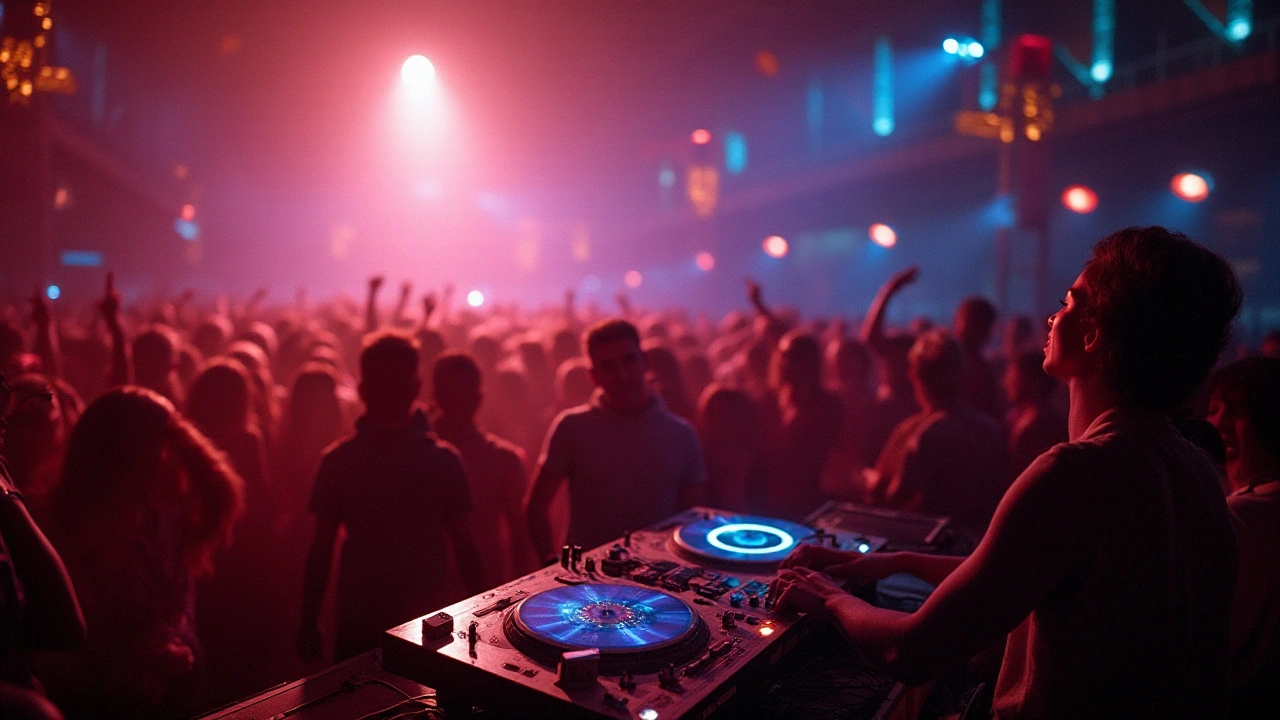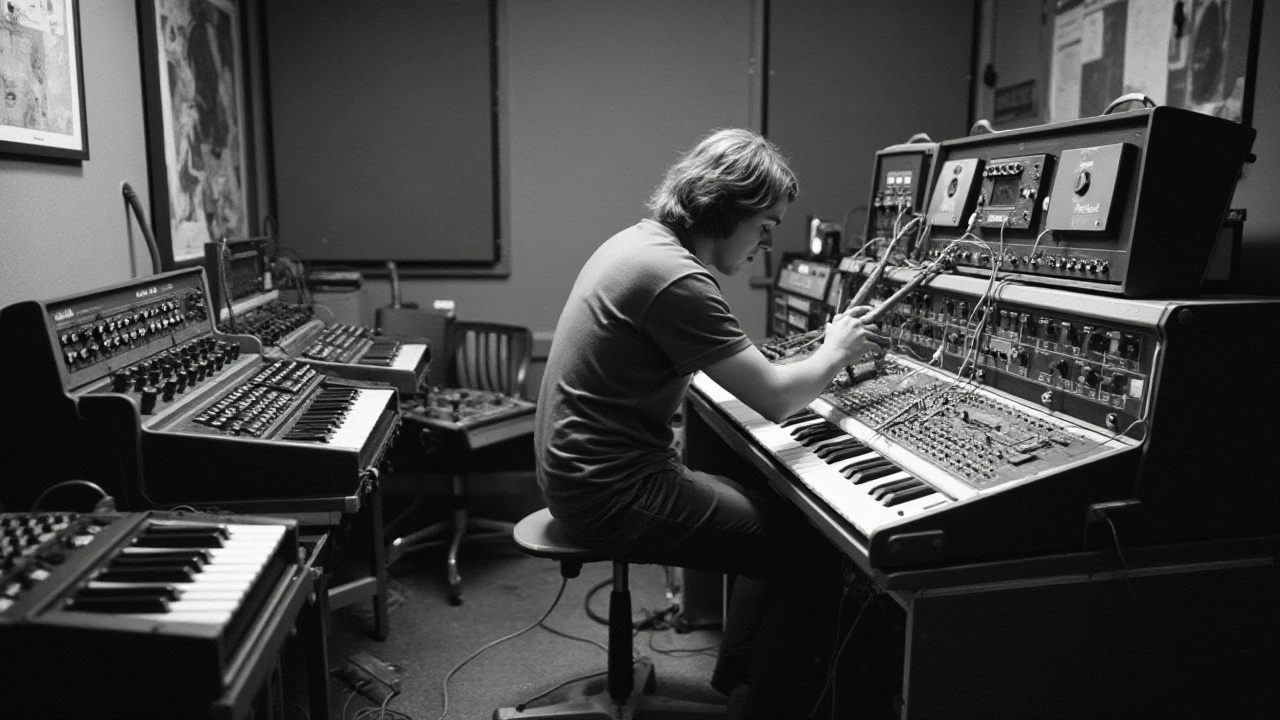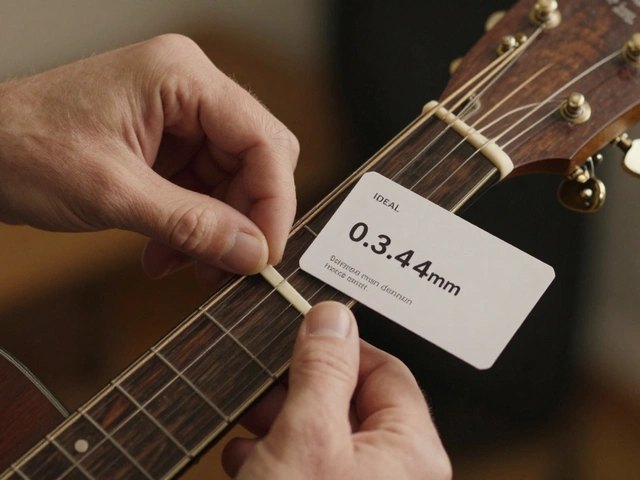Electronic music, with its myriad of sounds and styles, has a history as rich and varied as the notes that comprise it. While many associate it with the dance floors of today, its roots go much deeper, reaching as far back as the early 20th century.
The journey from the first electronic instruments to the digital beats we know now is filled with fascinating innovations and creative breakthroughs. By exploring each significant period in electronic music’s evolution, we can appreciate the art form even more and perhaps find new inspirations within its history.
- Early Innovations and Pioneers
- The Rise of Synthesizers
- The Birth of Techno and House
- The Digital Revolution
- Modern-Day Electronic Music
Early Innovations and Pioneers
Long before electronic music became a staple in clubs and festivals worldwide, it had its humble beginnings in experimental labs and studios. The early 20th century was a time of significant technological advancements, and it was this era that birthed some of the first electronic instruments. One of the earliest pioneers was Léon Theremin, who invented the Theremin in 1920. This instrument is unique because it’s played without any physical contact. Musicians control pitch and volume by moving their hands in proximity to two metal antennas. Its haunting, otherworldly sound has been used in numerous films and compositions, cementing its place in music history.
Another significant figure was Maurice Martenot, who created the Ondes Martenot in 1928. This instrument, much like the Theremin, produces eerie and ethereal sounds but allows for more expressive control using a keyboard and a slide. The Ondes Martenot drew the interest of many composers, including Olivier Messiaen, who employed it in several of his works, giving it a prestigious reputation in classical music.
In the 1930s, German engineer Friedrich Trautwein developed the Trautonium, an early synthesizer that significantly influenced the future of electronic music. Composer Oskar Sala became one of its most notable performers, using it to create unique sounds that had never been heard before. This period also saw the rise of the Hammond organ, invented by Laurens Hammond in 1935, which combined mechanical and electrical components to produce a distinct sound that became central in jazz, gospel, and eventually rock music.
As the mid-20th century approached, electronic music continued to evolve with the creation of the RCA Mark II Sound Synthesizer in the 1950s. This was the first programmable electronic synthesizer, making it a breakthrough in music technology. The RCA Mark II was used by the Columbia-Princeton Electronic Music Center, with prominent composers like Milton Babbitt and Vladimir Ussachevsky using it to explore new musical possibilities. The device was massive, taking up an entire room, but it laid the groundwork for the more compact synthesizers that would come later.
Significantly, during this era, two German composers, Karlheinz Stockhausen and Pierre Schaeffer, were pioneering the field of musique concrète. This genre involves manipulating recorded sounds to create music compositions. Pierre Schaeffer’s work with the GRM (Groupe de Recherches Musicales) in France led to groundbreaking compositions that utilized recorded sounds from the everyday world. Karlheinz Stockhausen, with his intense focus on innovative sound organization, became a major figure in post-war avant-garde music, influencing generations of electronic musicians.
“The work of these early innovators laid down the bedrock for much of the electronic music we enjoy today,” says Professor Julian Palmer, an expert in electronic music history. “Their experimentation with sound and technology opened up endless possibilities for future musicians and producers.”
The exploration and inventiveness of these early pioneers were integral to the foundation of electronic music. They showed that technology could be an instrument of artistic expression, not just a tool. Their legacy is evident in every beat, melody, and electronic sound we hear today, serving as a testament to their groundbreaking contributions to the music world.
The Rise of Synthesizers
In the world of electronic music, the synthesizer stands as a revolutionary invention that transformed both the creation and perception of music. The story of synthesizers begins in the 1960s, a time when engineers and musicians alike were exploring new ways to generate sound. One of the earliest and most iconic synthesizers was the Moog, developed by Robert Moog. Introduced in 1964, the Moog synthesizer boasted an array of oscillators, filters, and other components that allowed musicians to craft entirely new sounds. It was nothing short of groundbreaking.
Robert Moog's invention didn't stay in laboratories or obscure musical circles for long. It caught the attention of mainstream artists like The Beatles, who incorporated the Moog's unique tones into their work. Over time, other revolutionary models began to appear, such as the ARP 2600 and the Minimoog, further cementing the synthesizer's role in modern music creation. By the late 1970s, synthesizers had become part of the sonic palette of countless musicians and had profoundly influenced genres like rock, pop, and even classical music.
An important milestone in the evolution of synth music was the release of Wendy Carlos' album, "Switched-On Bach" in 1968. This album, composed entirely using a Moog synthesizer, was a major commercial success and played a key role in demonstrating the musical potential of synthesizers. Wendy Carlos once said,
"The Moog opened up an entirely new world of sound for musicians and composers alike."This sentiment was echoed by many others who found in synthesizers a limitless source of musical expression.
During the 1980s, the introduction of digital synthesizers, such as the Yamaha DX7, marked another significant leap. Unlike their analog predecessors, digital synthesizers used frequency modulation (FM) synthesis to create sounds. This progression allowed for even greater diversity in sound production, offering musicians a newfound level of detail and complexity. The synth music of the 1980s, characterized by its rich, layered textures, owes much to these technological advancements.
As the synthesizer evolved, so did its role in the creation of techno and house music. Musicians like Kraftwerk used these instruments to pioneer electronic music with repetitive, mechanical rhythms. Their innovations led to the emergence of techno, which became wildly popular in clubs around the world. By the 1990s, synthesizers were synonymous with dance music, shaping the beats that filled dance floors from Berlin to New York.
Synthesizers in the Digital Age
Another turning point came with the integration of synthesizers into digital workstations and software, making the technology more accessible than ever. Now, budding musicians can explore synthesizer sounds without needing expensive hardware. Software synthesizers have democratized music production, allowing anyone with a computer to experiment and create. Notable software such as Ableton Live and Logic Pro X offer powerful synthesis capabilities, opening up new realms of sonic possibilities. This shift has led to an explosion of creativity and innovation in modern electronic music.
The rise of synthesizers marks a fascinating chapter in the history of electronic music. From the analog warmth of the Moog to the precise digital capabilities of modern software synthesizers, the evolution of these instruments reflects the ever-changing landscape of music technology. The synthesizer’s journey is a testament to human ingenuity and our constant quest to expand the boundaries of what music can be.

The Birth of Techno and House
The late 1970s and early 1980s marked the dawn of techno and house music, two genres that would revolutionize electronic music and reshape the musical landscape. It all began in the underground clubs of Chicago and Detroit, where visionary DJs and producers forged new sounds from the technology at their disposal. In Chicago, the house sound was created by blending disco, funk, and electronic music, giving birth to tracks that were not meant for radio but specifically designed for the dance floor.
One of the key figures in this transformation was Frankie Knuckles, often dubbed the
The Digital Revolution
The digital revolution in electronic music began in the early 1980s when technological advancements started to reshape the creation and performance of music. One of the most significant developments was the introduction of MIDI (Musical Instrument Digital Interface) in 1983. MIDI allowed different electronic instruments and devices to communicate with each other, opening new doors for musicians and producers. This technology enabled a level of precision and creativity that was previously unattainable.
Duran Duran, Depeche Mode, and Kraftwerk were among the trailblazers who embraced these innovations. Their music demonstrated how digital technology could expand the horizons of sound. Kraftwerk, in particular, was influential in demonstrating the potential of electronic instruments in mainstream music. As Ralf Hütter of Kraftwerk once said,
“We are playing the machines, the machines play us.”This symbiotic relationship became a hallmark of the genre.
Sampling, introduced around this time, also revolutionized the way music was produced. By digitally capturing and manipulating existing sounds, artists were able to create entirely new compositions. This method became a staple in electronic music production, allowing for an unprecedented level of experimentation and creativity. Artists like Public Enemy and The Chemical Brothers became known for their innovative use of sampling.
The 1990s saw the rise of the internet, which further transformed the electronic music scene. Musicians could now distribute their music to a global audience without relying on traditional record labels. This democratization of music production and distribution meant that more voices could be heard, and the genre began to diversify rapidly. Websites like Napster, though controversial, played a significant role in this shift by making music more accessible.
Software-based digital audio workstations (DAWs) like Ableton Live, Logic Pro, and FL Studio became essential tools for electronic musicians. These platforms provided a virtual studio environment that empowered producers to compose, edit, and mix their tracks with remarkable ease and efficiency. The affordability and accessibility of these tools meant that anyone with a computer and a passion for music could create professional-quality tracks from their bedroom.
In the early 2000s, the advent of social media further revolutionized the industry. Platforms like MySpace and SoundCloud enabled artists to share their creations and connect with fans in ways that were previously unimaginable. This direct line to audiences encouraged a more personal and engaging relationship between artists and their listeners. Calvin Harris and Skrillex are prime examples of artists who leveraged these platforms to build their careers from the ground up.
By the mid-2010s, streaming services like Spotify and Apple Music had become dominant forces in the music industry. These services not only provided a new way for fans to discover music but also offered valuable data on listening habits and trends. This information helped artists tailor their content and strategies to better meet the demands of their audience.
The digital revolution in electronic music continues to evolve, adapting to new technologies and cultural shifts. Virtual reality (VR) and augmented reality (AR) are the latest frontiers, providing immersive experiences that blur the lines between live performance and digital creation. With each technological advancement, electronic music remains at the cutting edge, constantly reinventing itself and pushing the boundaries of what music can be.

Modern-Day Electronic Music
To see where electronic music stands today, one must look at how technology, social media, and cultural shifts have fused to create a landscape of endless possibilities. The digital revolution brought new tools and toys that redefined how artists create and distribute music. From powerful software like Ableton Live and FL Studio to the prevalence of digital audio workstations (DAWs), musicians no longer need expensive studio time to produce high-quality tracks.
Electronic music festivals such as Tomorrowland in Belgium and Ultra Music Festival in Miami have become cultural landmarks, drawing hundreds of thousands of fans globally. These festivals offer a platform for emerging artists to share the stage with industry veterans, creating a melting pot of sounds and styles. These giants of the festival circuit also utilize innovative technologies like augmented reality (AR) and virtual reality (VR) to enhance audience experiences further.
Genres within electronic music have also diversified immensely. While techno and house music remain staples, subgenres such as dubstep, trap, and future bass have gained enormous popularity. Artists like Skrillex and Marshmello have not only become household names but have pushed the boundaries of what electronic music can be. Their influence extends beyond music into fashion, gaming, and even lifestyle.
Social media platforms like YouTube and SoundCloud have democratized music distribution. Billie Eilish, though not strictly an electronic artist, gained initial attention through digital platforms and has significantly influenced how young artists perceive the importance of online presence. Even traditional electronic music artists like deadmau5 and Calvin Harris engage with their fanbase extensively online. This has blurred the lines between being a musician and a digital content creator.
"The future of music is not just digital; it’s interactive. Artists need to be where their fans are, and that place is increasingly online," says music producer Brian Eno, emphasizing the integration of digital and social aspects into music.
The role of women in electronic music has also gained notable recognition. Artists like Grimes and Alison Wonderland are reshaping what it means to be a female producer in a male-dominated industry. Initiatives aimed at encouraging female DJs and producers are gaining traction, further diversifying the genre’s landscape.
Moreover, collaborations between artists from different countries and genres have never been easier. Virtual studios and collaboration tools have enabled musicians to work together without ever stepping into the same room. This has led to a new wave of hybrid genres that pull from the best elements of disparate musical styles.
Streaming has also changed the game. Platforms like Spotify and Apple Music not only make music accessible but also offer algorithms that help listeners discover new tracks similar to their tastes. These platforms provide data back to the artists, allowing for more targeted promotion and audience engagement. Recent statistics indicate that electronic music is one of the fastest-growing genres on Spotify, reflecting its ever-growing popularity.






